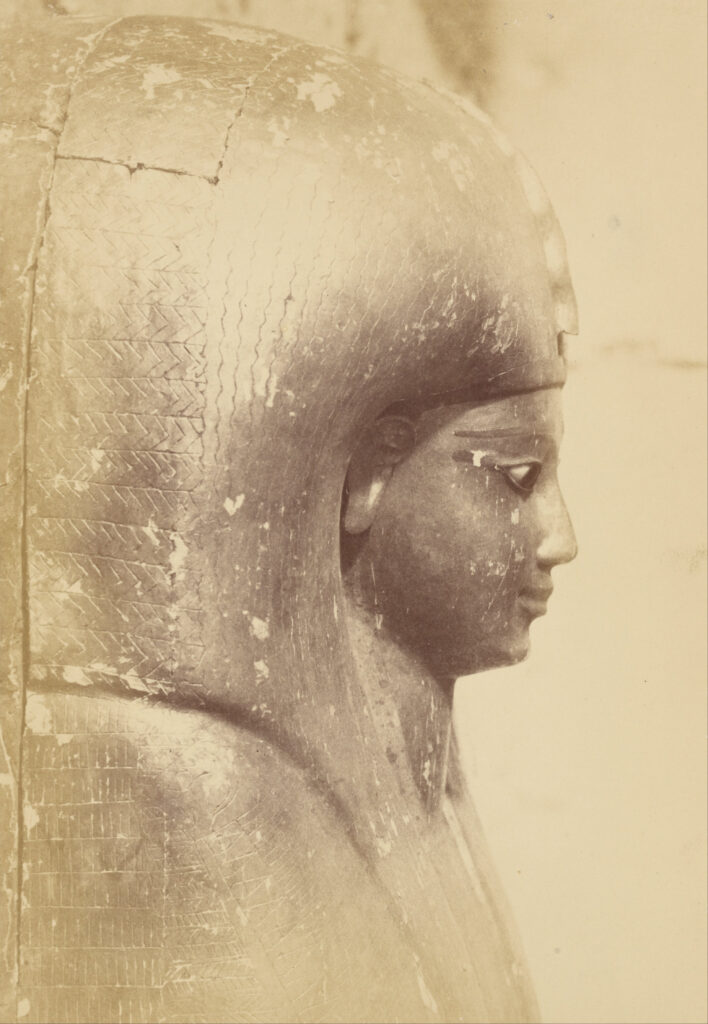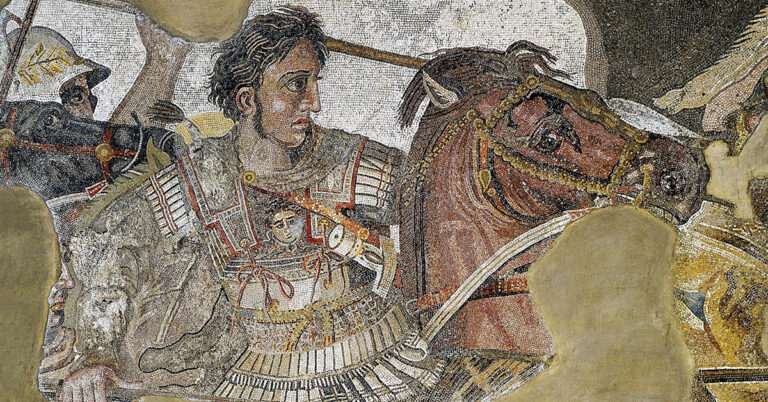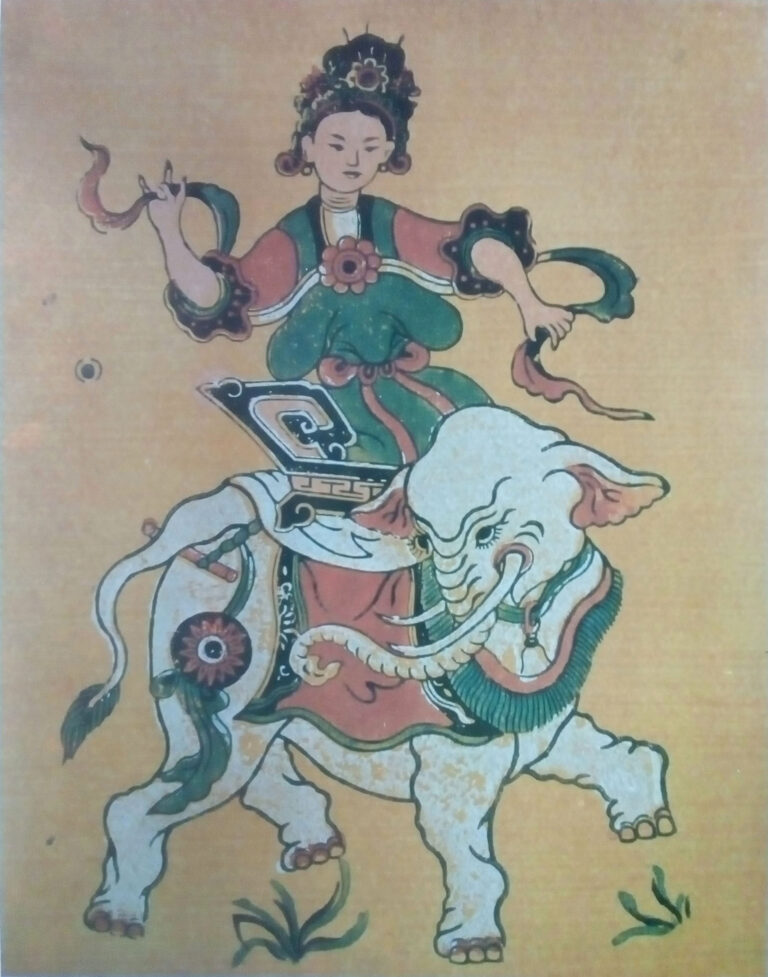
Plenty of films and TV series are based on historical female warriors. “Xena, Warrior Princess,” was inspired by the ancient Greek Amazons, and famous historical women warriors such as Queen Boudicca and France’s Joan of Arc have also had their moments on the small and large screen. But these aren’t history’s only female warriors. There are plenty more — many obscure or overlooked. Here are just six from ancient history who merit their own TV series.
1. Queen Ahhotep I — The Ancient Egyptian Queen who subdued a rebellion

Ahhotep I was a seventeenth dynasty Egyptian Queen who lived between 1560-1530 BC — making her one of the oldest female warriors on record. After her husband and brother Seqenenre Tao and his successor were killed fending off the Hyksos, the foreign rulers of Northern Egypt, Ahhotep became regent for her young son. She also took command of Egypt’s army. According to a stela at Karnak, Ahhotep “assembled her fugitives. She brought together her deserters. She pacified her Upper Egyptians. She subdued her rebels.” Ahhotep succeeded where the men before her had failed — in driving the Hykos back.
2. Fu Hao — The First Female General in the History of China
Another warrior woman of the second millennium BC was Fu Hao, the wife of King Wu Ding of the Shang. Fu Hao’s history, recorded on the Shang dynasty oracle bones, tells how the Queen began her military career as a teenage bride. With 13,000 warriors under her command, Fu Hao decisively defeated the Shang’s enemies in one battle — and led the first large scale ambush war in Chinese history. Over the years, Fu Hao’s military prowess helped widen the Shang territories. When she died in childbirth in around 1200 BC, her husband showed his esteem by constructing her tomb under his palace — where he conducted ceremonies to gain her spiritual assistance for his military endeavors.
3. Artemisia of Caria — The Ancient Naval Commander

Artemisia of Caria was not only a Queen in her own right but a naval commander. In the fifth century BC, the Queen joined the forces of her overlord, the Persian King Xerxes when they set out to invade Greece. Artemisia commanded five ships during the battle of Salamis near Athens. The Persian forces were defeated, and according to Herodotus, Artemisia accidentally rammed one of her own vessels in her haste to escape. However, Xerxes still held his commander in high regard and heeded her advice to retreat from Greece rather than try again. He also trusted her enough to transport some of his family back to the safety of Asia Minor.
4. Cynane, The Macedonian warrior Princess who was Alexander the Greats half-sister

 Alexander the Great’s older half-sister, Cynane was a successful military leader in her own right. Trained by her Illyrian mother to ride and fight, and just like the female warriors of her time, she led the troops of her father, King Philip, during the Macedonian expansion into the Balkans. Cynane survived Alexander’s massacre of his rival male relatives and wisely lay low until after her brother’s death. Then, she took to the battlefield against Alexander’s generals, who opposed her plan to marry her daughter, Adea, to her surviving half-brother, the feeble Philip Arrhidaeus. Cynane was murdered by one of those generals mid-speech before the decisive battle, a move that caused the Macedonian troops to turn on their commanders, ensuring the marriage took place, and Adea ruled — even if Cynane did not live to see it.
Alexander the Great’s older half-sister, Cynane was a successful military leader in her own right. Trained by her Illyrian mother to ride and fight, and just like the female warriors of her time, she led the troops of her father, King Philip, during the Macedonian expansion into the Balkans. Cynane survived Alexander’s massacre of his rival male relatives and wisely lay low until after her brother’s death. Then, she took to the battlefield against Alexander’s generals, who opposed her plan to marry her daughter, Adea, to her surviving half-brother, the feeble Philip Arrhidaeus. Cynane was murdered by one of those generals mid-speech before the decisive battle, a move that caused the Macedonian troops to turn on their commanders, ensuring the marriage took place, and Adea ruled — even if Cynane did not live to see it.
5. Trieu Thi Trinh — The Joan of Arc of Vietnam

Born in 226 AD, Trieu Thi Trinh was never conventional. As a child, she was interested in martial arts and fighting, and after the death of her parents, she reputedly took to the mountains where she assembled a band of 1000 followers. Later, Trieu mobilized her forces to join her brother in a people’s rebellion against the tyranny of their foreign rulers and became famous for riding a white elephant into battle. When the rebel forces were crushed, unlike Joan of Arc, Trieu evaded captured by killing herself.
6. Mawiyya — The Syrian Warrior-Queen who Defied the Romans
Mawiyya was the Queen of the Tanukh confederacy, a group of semi-nomadic Arabs living in southern Syria in the fourth century AD. Considered “the most powerful woman in late antique Arabia after Zenobia” she led her countrymen in a revolt against their Roman rulers, driving the Romans back to the borders of Egypt. It was there that a truce was agreed— on Mawiyya’s terms. After that things settled down and Mawiyya resumed her support of the empire, supplying Tanukh horsemen to drive off Gothic incursions in Thrace.
Sources
Artemisia I, Encyclopaedia Britannica, November 13, 2019
Fu Hao — First Female General in the History of China and Wife of Four Kings. Chinafetching.com
Hazel, John, (2000) Who’s Who in the Greek World. Routledge: London and New York
Mark, Joshua J, Mavia, Ancient History Encyclopaedia, March 18, 2018
Queen Ahhotep I, Ancient Egypt Online
The Uprising of Trieu Thi Trinh, Vietnam National Museum of History, May 15, 2013
Toler, Pamela D, (2019) Women Warriors: An Unexpected History. Beacon Press.